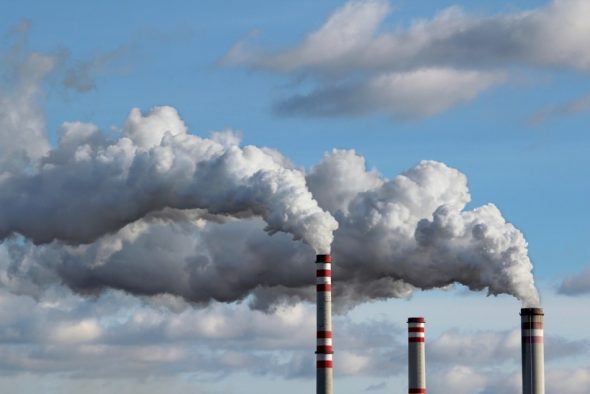
The growth in global production of greenhouse gases has decelerated over the past few years, with 2015 seeing the first actual reduction, of 0.1% compared to 2014 levels, according to a European Union report published 6 December.
A “structural shift away from carbon-intensive activities” such as coal consumption in China and the US has been a key factor in curbing the emissions, the report said.
Meanwhile, US developers installed solar PV systems at the fastest pace on record in the third quarter – adding as much as a megawatt every 32 minutes, according to the Solar Energy Industries Association. Utility-scale plants accounted for 77% of installations in the period as developers brought plants online that qualified for tax credits under last year’s extension of the incentive.
However, further progress on emissions cannot be taken for granted. President-elect Donald Trump has picked Oklahoma Attorney General Scott Pruitt to lead the US Environmental Protection Agency. Pruitt is an ardent critic of the EPA’s Clean Power Plan, which seeks to reduce power plant emissions, and has joined 26 other attorneys general in suing to block the carbon rules presented by the Obama administration. If confirmed as head of the EPA, Pruitt could put his weight behind diluting the Clean Power Plan, which was halted by the US Supreme Court in February, pending a decision on its legality.
In other US news, former Texas Governor Rick Perry is rumoured to be the leading candidate for the position of energy secretary within the incoming administration. Perry is a board member of Energy Transfer Partners – the company whose North Dakota crude oil pipeline project is opposed by local residents and environmentalists.
Meanwhile, heavyweight investors including Bill Gates and Richard Branson are plowing capital into a $1 billion investment fund to power clean energy production. The aim of the 20-year fund, dubbed Breakthrough Energy Ventures, is to pump money into risky, long-term energy technology with the potential significantly to reduce greenhouse gas emissions, according to a statement by the fund.
Royal Dutch Shell is also participating to the trend towards low-carbon investment, with its biggest step yet into the offshore wind industry. The oil giant won a tender to provide power at 5.45 eurocents (5.8 US cents) per kWh from 680MW of offshore wind farms in the Netherlands. The contract is the second cheapest price seen yet for the technology. Sweden’s Vattenfall holds the current offshore wind record at 4.99 eurocents/kWh, the winning bid in Denmark’s 600MW Krieger’s Flak tender last month and discussed further in this BNEF note.
Faced with a profound electricity shortage and large infrastructure deficit, Nigeria is stepping into the green bond market with plans to raise NGN 20bn ($63m) by March to fund renewable energy projects. Selling the sustainably-aligned notes to the international community will help West Africa’s biggest economy fund off-grid solar projects, an electric vehicle commuter project and a clean-up of oil spills in the southern Niger River delta.
Also in West Africa, Senegal’s second utility-scale solar project is on the cards, following news that Paris-based investor Meridiam is planning to build a 30MW solar plant east of Dakar. The Ten Merina project will cost about EUR 43m ($46m) and will be financed by an 18-year loan of EUR 34.5m from France’s Proparco and BIO, a Belgian development investor.
In other solar news, India plans to tender as much as 1GW of solar rooftop capacity this month in a bid to accelerate the installation of panels on government buildings, and to meet Prime Minister Narendra Modi’s goal of generating 100GW from the sun by 2022. Unlike a previous auction of 500MW in November, the winners of December’s competitive bidding process won’t receive full payments up front but instead will receive incentives in a step-by-step process as they meet completion timelines, according to Solar Energy Corporation of India.
Elsewhere in Asia, Japan is transitioning from feed-in tariffs for large-scale solar to a competitive auction system. In September, the Ministry of Economy, Trade and Industry will invite developers to submit bids to build a total of 500MW of solar power in projects of 2MW or larger, according to a ministry document. It is hoped that the plan will rejuvenate Japan’s lacklustre solar industry and give greater clarity to developers regarding the tariffs they can expect to receive.
From July 2012 to July 2016, Japan commissioned almost 30GW of solar PV plants, while the amount of yet-to-be-commissioned capacity – still eligible to receive feed-in tariffs — exceeded 50GW in the period, according to this BNEF Insight Note.
China to ramp up its offshore wind installations by 2020 (GW of capacity)

By the end of 2016, a total of 13.8GW of offshore wind capacity will have been installed worldwide, with more than $24bn invested in building new plants this year, according to BNEF. And by the end of the decade almost 40GW of offshore wind turbines will be installed in waters globally, the research organisation forecasts.
In the graph above, ‘other’ includes Finland, France, Ireland, Italy, Japan, Korea, Taiwan, US, Norway, Portugal and Sweden.










